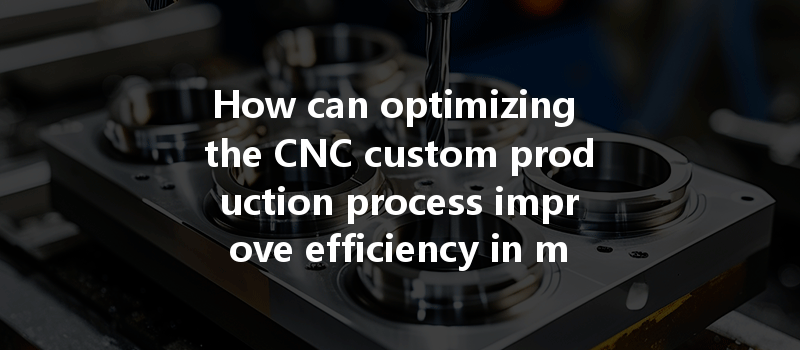Opening:
Did you know that optimizing the CNC (Computer Numerical Control) production process can lead to a remarkable increase in manufacturing efficiency by up to 30%? In today’s competitive industrial landscape, where precision and speed are paramount, the pressure to improve production efficiency has never been more intense. Companies reliant on CNC machining can benefit greatly from understanding the nuanced strategies and advanced technologies that can revitalize their approach to custom production.
Content:
Understanding CNC Custom Production
CNC machines have revolutionized manufacturing by allowing for precise control over tools and machinery. This capability not only enhances accuracy but also enables the creation of complex parts at scale. However, tapping into the full potential of CNC production requires more than just competent machinery; it demands a comprehensive optimization strategy.
Identifying Key Areas for Optimization

Implementing Optimizations: A Step-by-Step Guide
To effectively implement these optimization strategies, manufacturers can take the following steps:
The Importance of Collaboration Across Departments
Successful optimization of the CNC custom production process requires collaboration across different departments within an organization. Engineering, production, quality control, and purchasing teams need to work closely to ensure that all aspects of production align with the optimized workflows. This cross-departmental communication enables quick decision-making and fosters a unified approach to achieving efficiency goals.
Industry Examples of Successful Optimizations
Several companies have marked their success story through effective CNC optimization. For instance, a leading aerospace manufacturer implemented real-time monitoring systems integrated with predictive analytics, resulting in a 25% decrease in machine downtime. Meanwhile, a competitive automotive part producer adopted advanced simulation technologies, cutting production time by 35% while ensuring higher-quality output.
In summary, optimizing the CNC custom production process is not just about improving speed; it encompasses a holistic approach involving process planning, tool selection, employee training, and technological integration. Manufacturers that focus on these areas are more likely to achieve significant gains in production efficiency, leading to cost savings and enhanced competitiveness in the market.
As industry trends shift toward smarter manufacturing, it’s crucial for stakeholders to consider how these optimization strategies can be tailored to their unique processes. The journey to efficiency begins with an awareness of how interconnected various elements of production are and an unwavering commitment to continual improvement. Embracing these tactics means not only increasing productivity but also establishing a foundation for sustainable growth in an ever-evolving manufacturing landscape.
With the understanding that efficiency leads to profitability, it is worth reflecting on how your CNC production processes can harness these insights to propel your business into a successful tomorrow. Start exploring the optimization opportunities available to you, and watch your efficiency soar.
Related Posts
- How can CNC machining plants ensure that customers’ design requirements are met for prototype machining?
- How does heat treatment impact the size and accuracy of parts after CNC machining?
- Certainly! Here are five question-style FAQ titles based on the provided keywords: 1. How can the precision of CNC machining be maximized for various materials and applications? 2. What are the significant differences between CNC machining applications for thermoplastics and thermosets? 3. How do different surface treatments impact the overall prices of CNC machining services? 4. What techniques can CNC operators use to enhance their skills and improve production efficiency? 5. How does the weight of materials influence their selection for CNC machining processes?






